Video Marketing Statistics 2025: Insights That Will Shape Your Strategy

From instagram feed to your favorite app, video is everywhere ruling the screen.
Video making in 2025 is not just a trend anymore, it’s a full-fledged marketing strategy which is at an all-time high. It is reshaping the way how brands connect with their audience for higher engagement and better conversions.
Taglines & static posts aren’t enough anymore, with the digital world being dominated by visually rich content like videos. Today, brands must deliver their stories in engaging, authentic and instantly captivating ways to grab attention and build trust with their audience.
This blog will discuss the important video marketing statistics in 2025 and how businesses can boost their conversions & visibility by leveraging the power of video as part of their marketing strategy.
Why Video Marketing Still Rules in 2025

In 2025, video will remain the most consumed content format online. Businesses continue to rely on video to drive traffic, boost conversions, and build trust. According to HubSpot, 93% of marketers say video is an essential part of their marketing strategy this year.
Compared to static content, videos grab attention faster and keep viewers engaged longer. According to DemandSage, 87% of marketers believe video has contributed to increased sales in 2025. Video content continues to dominate because it delivers value quickly and is easier for consumers to absorb.
Video is also mobile-friendly as audiences are increasingly mobile-first, which means that they can watch video on various devices. Marketers can now establish a meaningful connection with users through short-form videos to live streams. Another video marketing statistics is that users share videos willingly as compared to any other sort of content, providing it with the edge of organic reach.
What Data Says About Video Marketing?
Understanding the overall state of video marketing can help you evaluate its value. The following are the most relevant general video marketing statistics 2025:
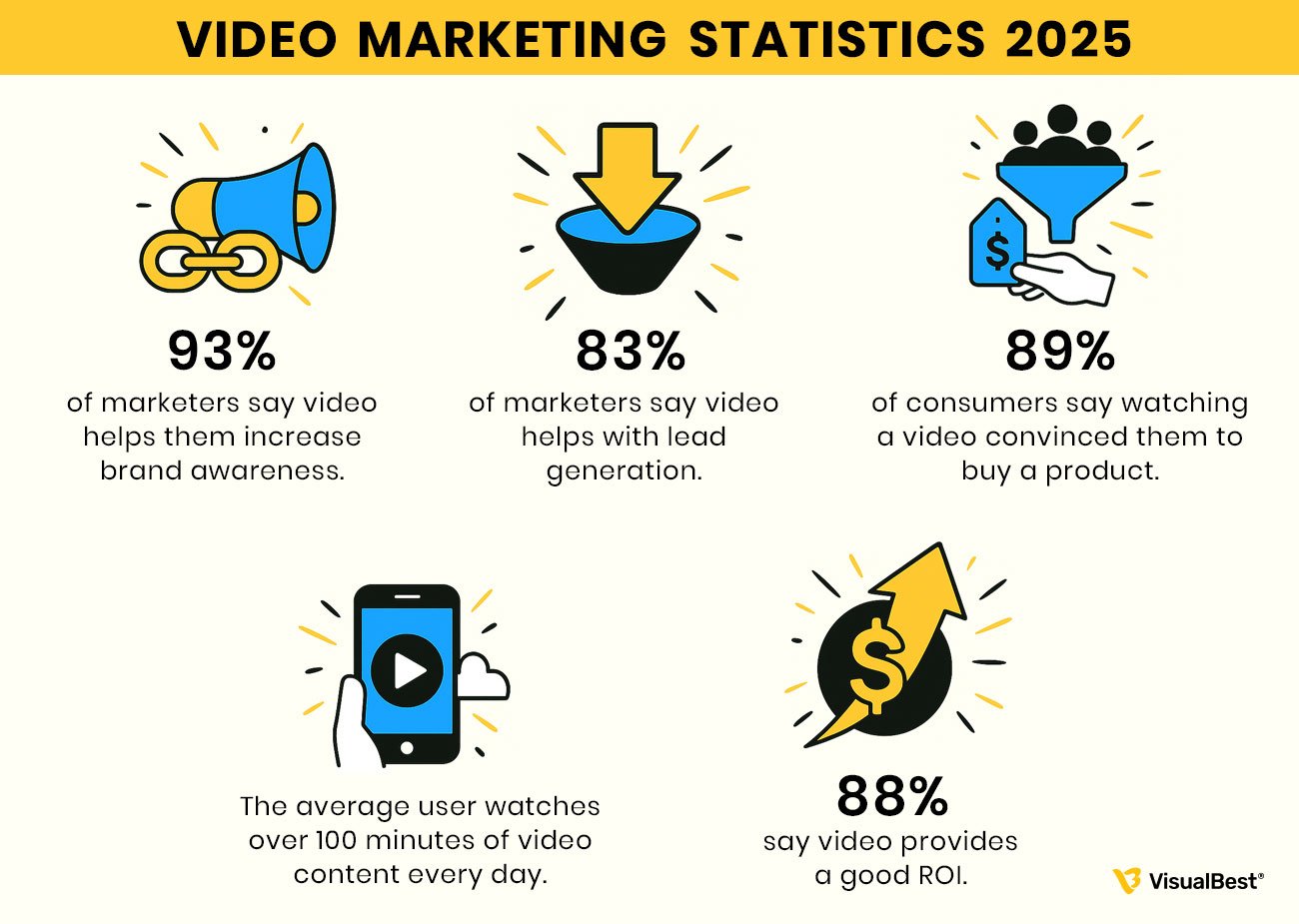
These video marketing statistics demonstrate that video is more than a passing fad. It’s a long-term asset for digital marketing strategies. Video works well at every stage of the marketing funnel—from discovery to decision-making.
Marketers are also creating more videos than ever. According to DemandSage, 79% of firms intend to raise their video content budgets by 2025. Video also helps with SEO by increasing the time spent on pages and lowering bounce rates.
How Much Do Businesses Spend on Video Advertisement?
According to recent video marketing statistics from Statista, global spending on digital video advertising reached $191.4 billion in 2024. This is a 10% increase from 2023, when spending was $173.5 billion, and a 21% increase from $158.8 billion in 2022.
In 2025, digital video ad spending is expected to grow by another 8.4%, crossing the $200 billion mark for the first time. The projected total is $207.5 billion by the end of the year.
Digital video advertising has seen rapid growth since 2017. At that time, global spending was just below $35 billion. By 2018, it had grown by over 53% to reach $53.43 billion, and nearly doubled again by 2020, hitting $106.5 billion.
Growth is projected to decline by a marginal amount, but the upward trend remains. It is forecast that in 2026, an increase of 7.7 percent will include a total spending of 223.5 billion. It is expected that by the year 2027, the amount of money spent on video ads across the world may exceed $239.1 billion, and by 2029, it may reach up to 268 billion. This would be over seven times the 2017 number, if true.
How Much Do Businesses Spend on Video Marketing for Short-Form Content?
Short-form video marketing is growing even faster. By 2025, the world will spend $111 billion on short-form digital video advertisements. This would constitute a 12 percent growth over the 2024 figure of 99.43 billion dollars.
In 2017 alone, companies spent about 1.6 billion on short-form video advertisements. This almost tripled to 4.6 billion dollars in 2018. The expenditure increased by 179.7 percent in 2019 to reach 12.87 billion.
The year 2020 saw total spending on short-form ads surpass $32 billion. A year later, it nearly doubled once again to $62.21 billion, and in 2024 exceeded the mark of $99 billion.
The rate of spending is also going to be slower than before 2025. It is projected that it will reach $122.5 billion in 2026 (10.2 percent up) and be $134 billion in 2027 (9.6 percent up). The worldwide market size of short-form advertising may hit up to 157.5 billion dollars by 2029, retailing from 112.5 billion in 2025 or an increase of 41.9 percent. This would be close to 100 times greater than the levels in 2017.
Platform-Specific Video Marketing Stats
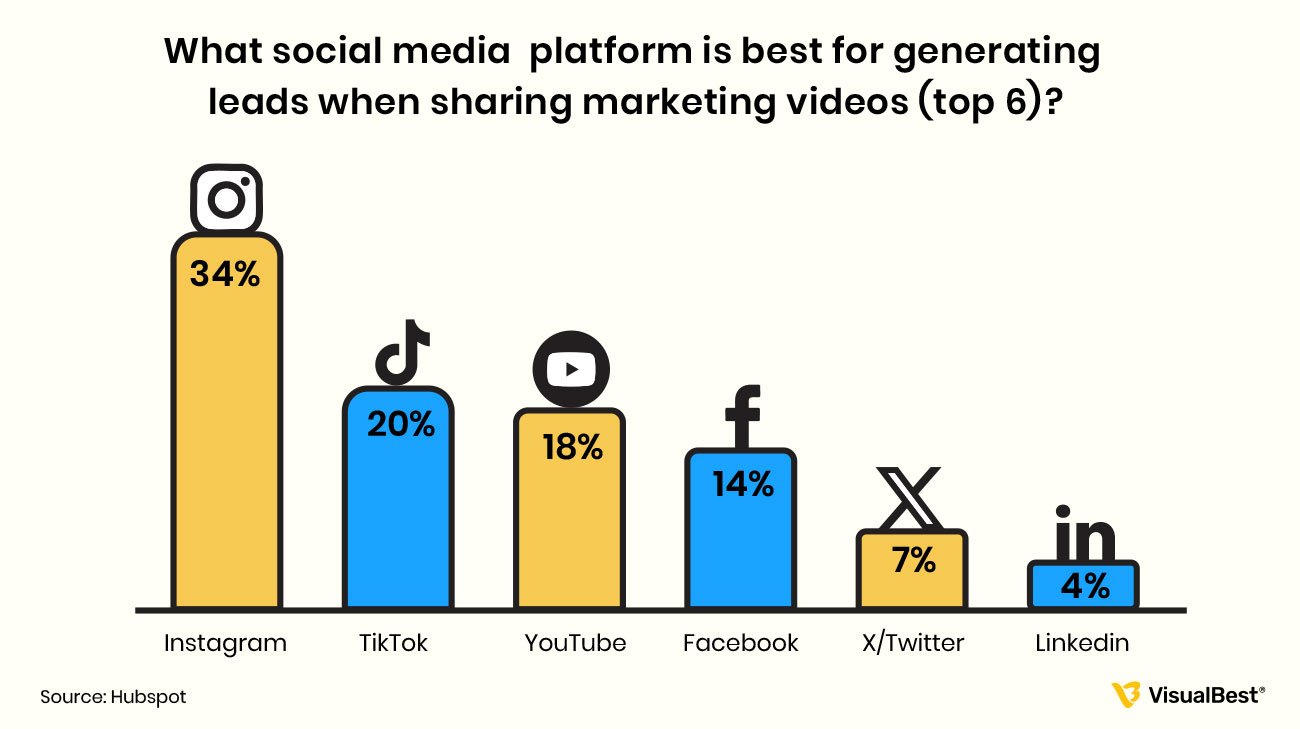
Each social media platform has its audience and behavior. Let’s break down the most useful video marketing statistics for each platform in 2025.
YouTube
- Over 2.7 billion monthly active users in 2025.
- 74% of users use YouTube to learn about new products.
- YouTube ads have a 65% view-through rate.
- YouTube Shorts are watched over 70 billion times per day.
YouTube remains the go-to platform for long-form educational and product videos. It also offers strong targeting and performance tools for advertisers.
Instagram and Reels
- 91% of users watch videos on Instagram weekly.
- Reels generate 22% more engagement than traditional posts.
- Over 60% of marketers use Instagram video content in campaigns.
Instagram continues to blend entertainment and commerce. Reels perform especially well for product launches, tutorials, and user-generated content.
TikTok
- 1.8 billion monthly active users in 2025.
- The average session time is over 11 minutes.
- Compared to other platforms, TikTok advertising gets 2.5 times more engagement.
TikTok leads short-form video engagement. Brands that use trends, storytelling, and music see higher returns.
- 1 in 3 video views on Facebook comes from live content.
- Native videos get 10x more reach than external video links.
- Facebook Watch has over 1 billion users.
Facebook still holds value for longer videos and live streams. It performs well with community-driven and event-based content.
- Video posts are shared 20x more than text-based content.
- 63% of B2B marketers use video in LinkedIn campaigns.
- LinkedIn video advertisements are 30% more likely to be completed.
LinkedIn is ideal for B2B, explainer videos, and product launches. It helps brands build authority in professional spaces.
Emerging Platforms
- The save rate for Pinterest video pins is 70% higher.
- Snapchat video ads offer 2x higher swipe-up rates than average.
- Threads and other micro-video platforms are slowly gaining traction.
These platforms may not be the first choice for video marketing yet, but they offer strong niche engagement and unique formats.
How Much Video Content Do People Consume Online?
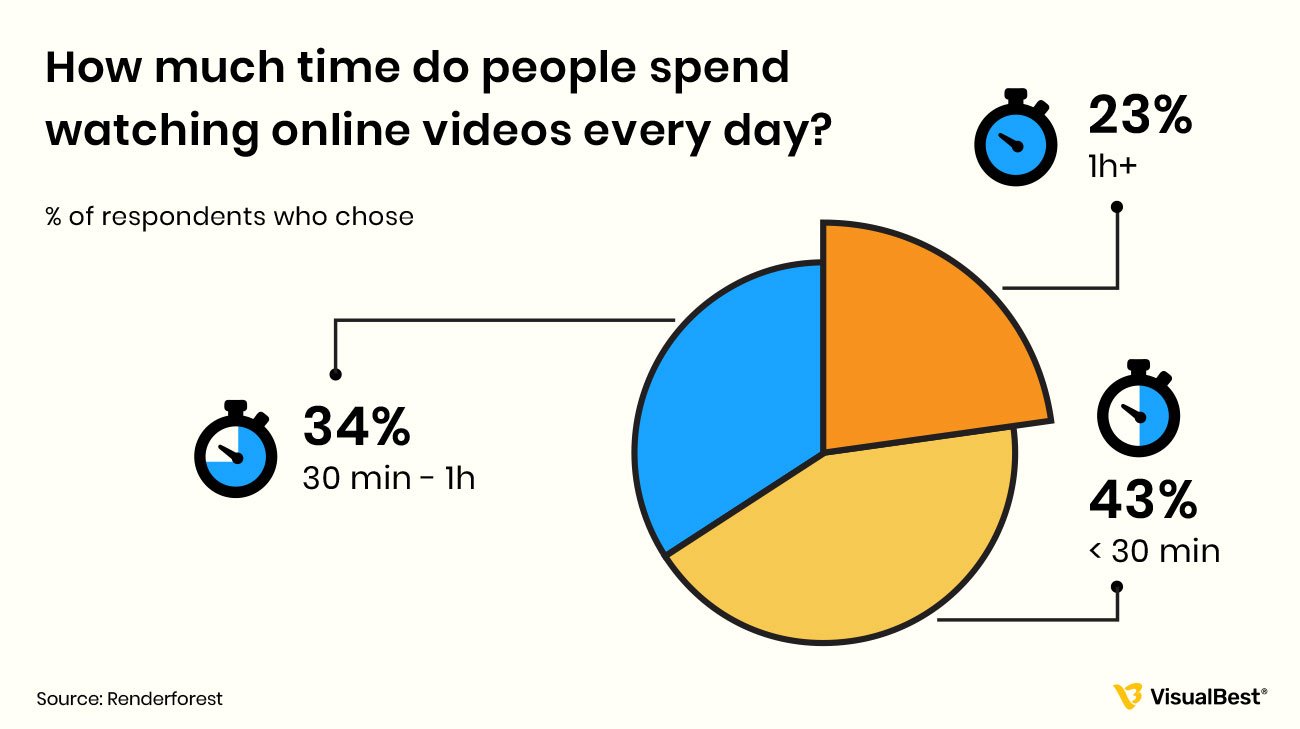
Almost 3.5 billion internet users downloaded or streamed videos at least once a month in 2023. According to Statista, 164.6 million people were predicted to watch live videos in the US alone in 2024.
By the first quarter of 2024, online videos had a global audience reach of 92.3%. This implies that over nine out of every ten individuals in the world may have access to video material online. Meanwhile, Wyzowl indicated that in 2023, the average amount of video consumed by people around the globe was 17 hours per week. This was a small decrease compared to the 19 hours in 2022.
Which Country Watches the Most Video Content Online?
With 476 million subscribers as of July 2024, India accounted for the largest number of YouTube watchers worldwide. This was double the number of users in the United States, which ranked second with 238 million viewers, according to Statista.
Brazil held third place, with 147 million YouTube viewers. This was about 38% less than the United States. Indonesia came next, with 139 million viewers, which was 65% more than Mexico, the fifth-highest country on the list.
Vietnam, the Philippines, and Turkey also appeared in the top 10. The Philippines and Turkey each had 58.1 million viewers, about 8% lower than Vietnam and less than a quarter of the total audience in the United States.
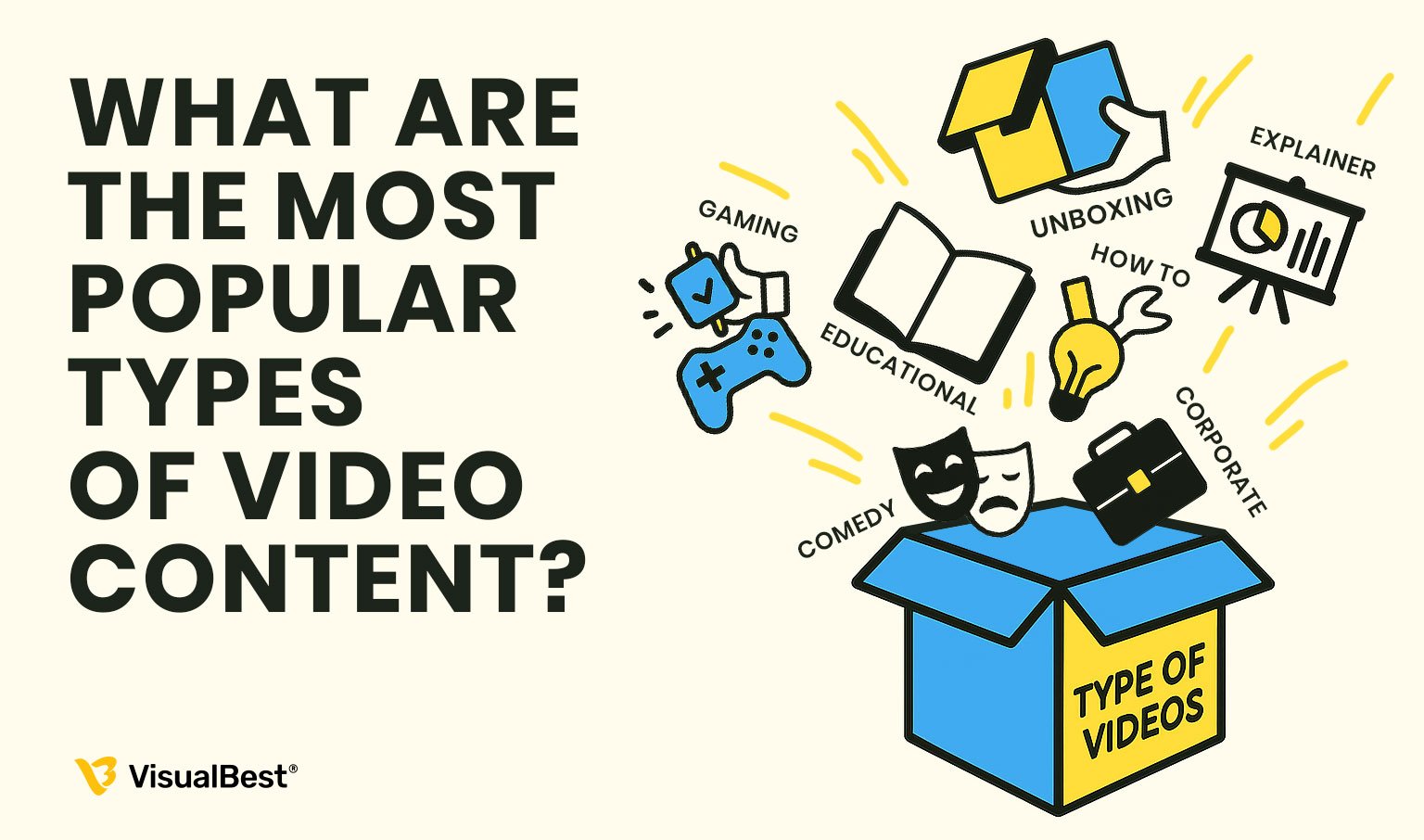
Music videos were the most-watched content category online in the last quarter of 2024. Every week, 48.2% of internet users worldwide saw music videos, according to Statista. This made music videos more than 13% more popular than any other content type.
With 35% of viewers watching them each week, comedy, meme, and viral videos came next. This category outperformed all others by over 7%, making it the only other format viewed by more than a third of users weekly.
Weekly Viewership by Video Content Type:
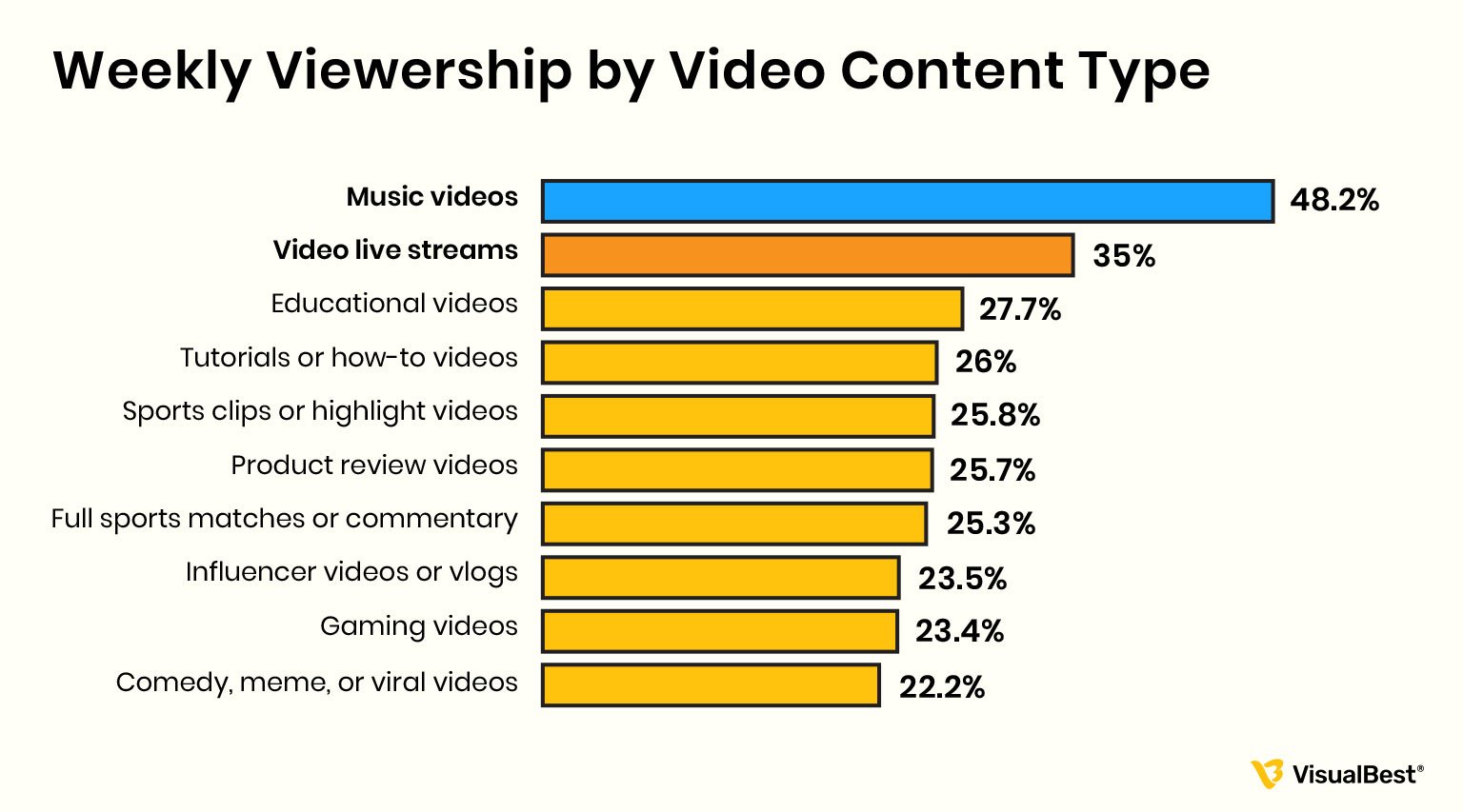
Live video streams ranked third, with 27.7% of users watching them weekly. This was nearly 2% more than those watching educational content (26%).
Other types of video content viewed by more than a quarter of internet users weekly include:
- Tutorials or how-to videos (25.8%)
- Sports highlights (25.7%)
- Product reviews (25.3%)
At the lower end of the list were influencer videos or vlogs (23.4%) and gaming videos (22.2%). Gaming content had the lowest weekly reach in this group.
How Many Businesses Use Video Marketing in 2025?
Video marketing statistics published by Wyzowl reveal that in 2025, 89% of businesses are engaged in video marketing. This is a bit below the 91% reported in 2024, which is a decrease of 2 percent.
Since the year 2016, video marketing has grown drastically, with only 61 percent of businesses taking advantage of it, as opposed to the 86 percent that now do. It reached 63 percent in 2017, and then it rose sharply by 18 percent in 2018, topping 80 percent for the first time.
In 2019, the number climbed to 87%. It remained steady through 2020–2022 and peaked at 91% in 2023. The figure stayed the same in 2024 but dropped slightly in 2025.
Over the course of nine years, from 2016 to 2025, the number of businesses using video marketing grew by 28 percentage points. Despite a slight decline recently, video remains a widely used and trusted marketing tool across industries.
Consumer Behavior and Video Engagement Stats
To build a solid strategy, you must understand how users interact with videos. Here are key insights into consumer behavior and video engagement in 2025:
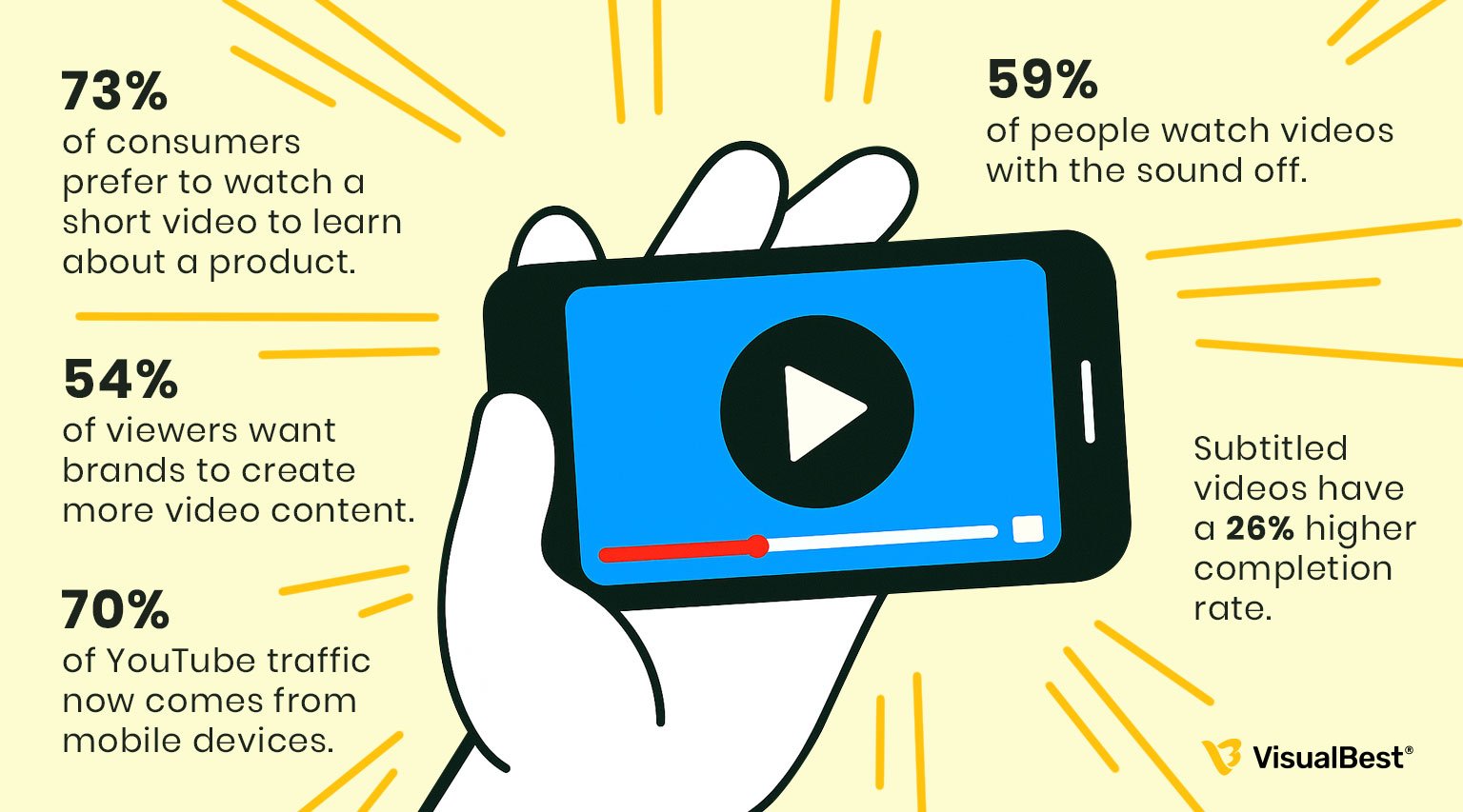
- 73% of consumers prefer to watch a short video to learn about a product.
- 54% of viewers want brands to create more video content.
- 70% of YouTube traffic now comes from mobile devices.
- 59% of people watch videos with the sound off.
- Subtitled videos have a 26% higher completion rate.
People now want quick, convenient, and mobile videos. The most common desired length of the video ranges between 1 and 2 minutes. Personalized videos also work better as they have a three times higher click-through rate than the generic ones.
Interactive videos, in which the audience can click, vote, or select a plotline, are on the rise as well. Such forms extend the time of engagement and raise the conversion rates by 35 percent on average. Videos that contain real people, narratives, or behind-the-scenes performances do well in 2025.
ROI of Video Marketing in 2025
Video content is not just about views or likes. It offers real financial returns. Here are the ROI-focused video marketing statistics 2025 marketers should know:
- 88% of marketers say video provides a positive return on investment.
- Landing pages with videos convert 86% better than those without.
- Email campaigns with video increase click-through rates by 200%.
- Adding video to a product page can increase purchases by 85%.
- Video ads show a 34% better conversion rate than image-based ads.
Whether you use video in social media, email, or websites, it helps guide users toward action. Video builds trust, explains products clearly, and moves customers down the funnel faster.
Video Trends Backed by 2025 Statistics
Marketers should stay updated with what works today. Here are the top trends supported by current video marketing stats:
- Short-form videos: Videos under 60 seconds have the highest engagement. TikTok and Instagram Reels lead this format.
- Vertical video: 75% of video content is now viewed vertically on mobile devices.
- Interactive videos: Videos with clickable elements increase engagement by 35%.
- Live streaming: 1 in 5 users prefer live videos for product launches.
- Shoppable videos: These allow users to buy directly while watching. They now account for 30% of eCommerce video sales.
Trends are different consumer habits. Marketers need to come up with content that fits these behaviors to remain competitive.
Challenges and Opportunities in 2025
Video marketing is effective but it is also associated with its difficulties. These include:
- Content saturation: There is an excess of videos.
- Poor concentration: People get bored easily.
- Cost of production: Good quality videos cost money.
However, there are big opportunities too:
- AI tools: Automation helps reduce editing time and cost.
- Personalization: Custom videos boost engagement and ROI.
- New formats: Interactive, live, and 360° videos offer creative ways to stand out.
Brands that overcome challenges and adapt to trends can lead in their niche.
How Visual Best Can Help
At Visual Best, we help brands bring their video marketing ideas to life. Our creative team builds customized videos that align with your audience, platform, and goals. We work with businesses across industries to craft high-converting videos, including explainer videos, product demos, testimonials, and animated clips.
We understand the current video marketing statistics and trends, and we use that knowledge to create content that performs. Whether you’re launching a product, educating your customers, or boosting your brand online, Visual Best is here to support your vision with creativity and data-driven storytelling.

Conclusion
Video continues to be the most effective tool in a marketer’s toolkit. The video marketing statistics 2025 show how much users prefer video content and how well it performs across channels. Whether you’re creating short-form clips, live sessions, or educational videos, the key is to focus on quality and relevance.
With the right strategy and a clear understanding of audience behavior, your video campaigns can drive powerful results. Stay updated with the latest video marketing stats and create content that connects, converts, and delivers value.
Frequently Asked Questions (FAQs)
1. What are the most important video marketing statistics for 2025?
Video marketing helps 93% of marketers increase brand awareness and 88% see a positive ROI. Consumers are watching more than 100 minutes of video daily.
2. Which platforms perform best for video marketing in 2025?
YouTube, TikTok, and Instagram are top-performing platforms. LinkedIn works well for B2B content and Facebook is strong for live and community-based videos.
3. What is the best video length for higher engagement?
The ideal video length is 60 to 120 seconds. Short videos under one minute tend to have the highest completion rates.
4. Is video marketing better than blogs or images?
Yes, video content drives more engagement, has higher CTRs, and delivers better ROI compared to blogs and static images.
5. How can I get started with video marketing for my business?
Start by defining your goal, audience, and platform. Then, create short, clear, and high-quality videos. You can also work with agencies like Visual Best for expert video creation and strategy.















